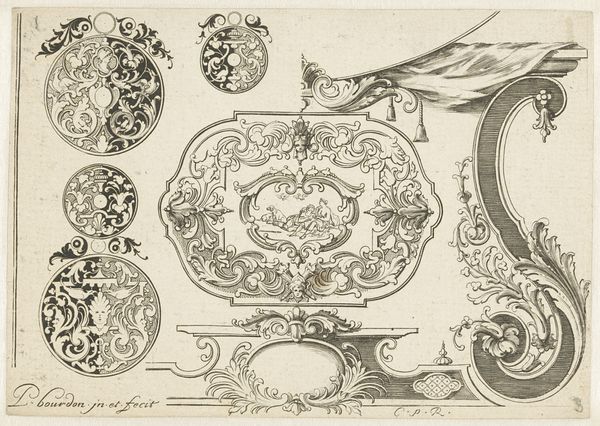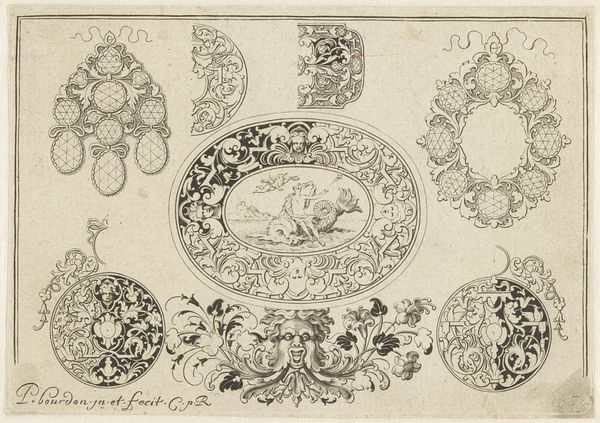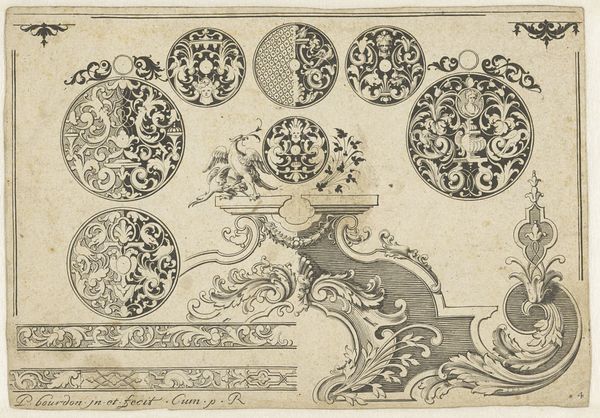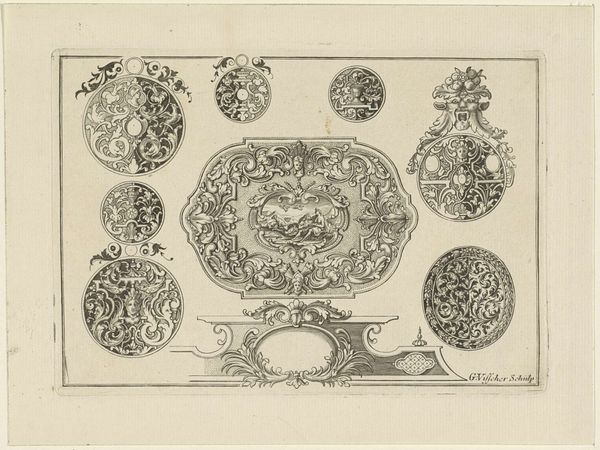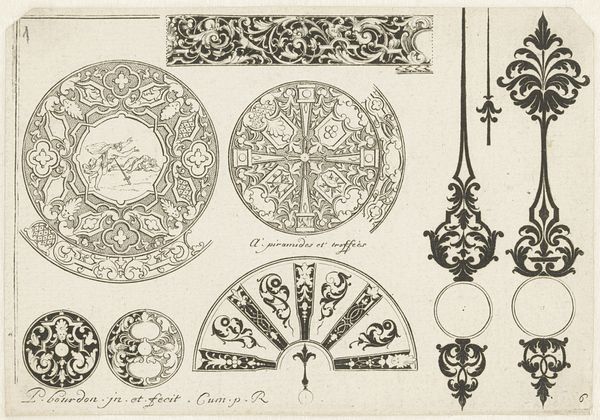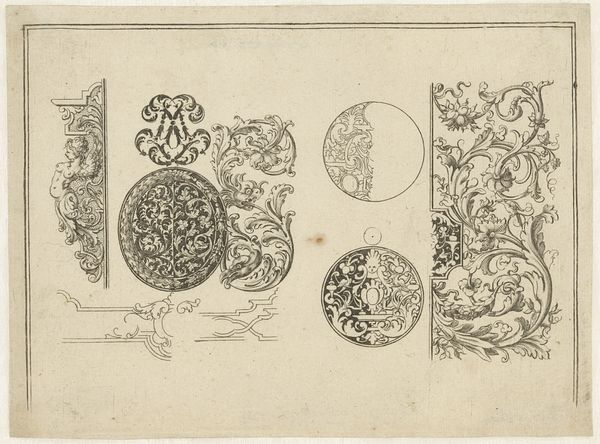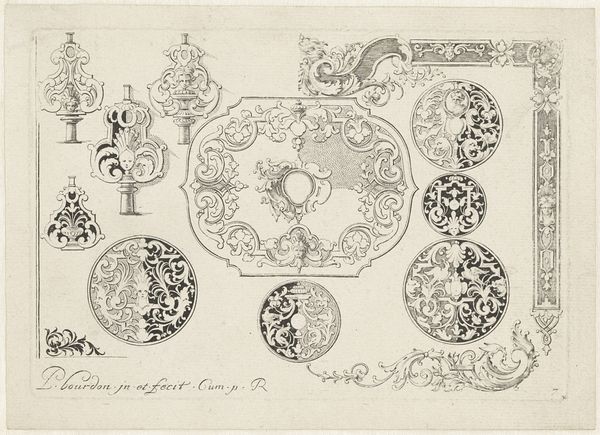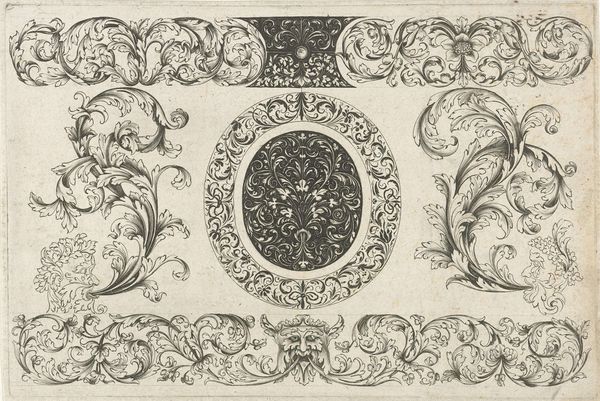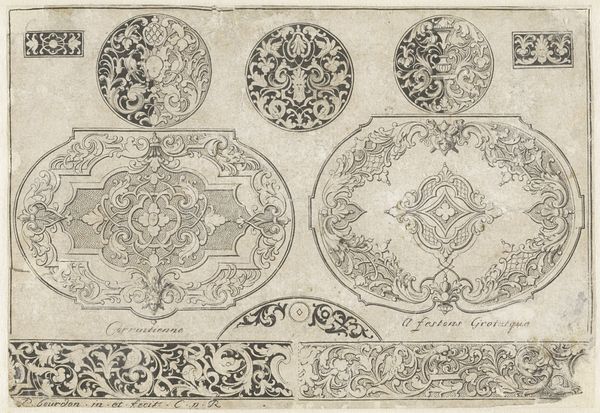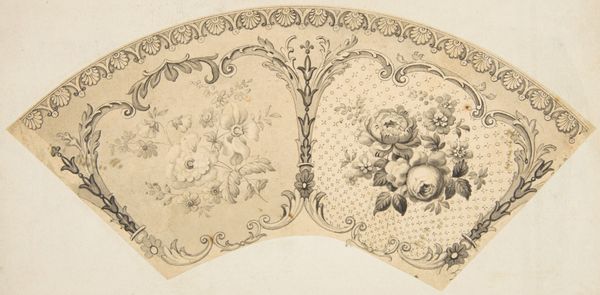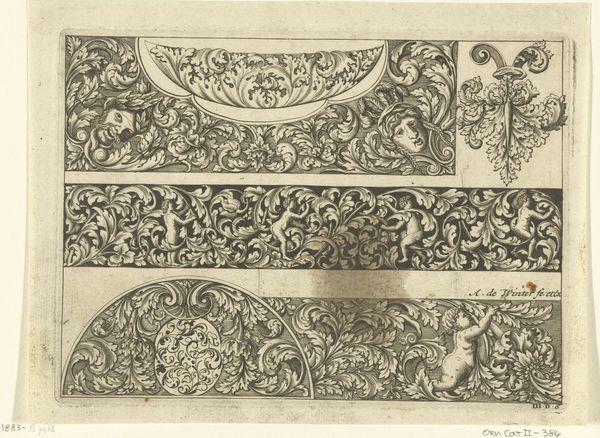
Ontwerpen voor horlogekasten met twee scènes van Apollo en Daphne 1703
0:00
0:00
drawing, ink, engraving
#
drawing
#
baroque
#
pen drawing
#
old engraving style
#
ink line art
#
ink
#
geometric
#
line
#
history-painting
#
engraving
Dimensions: height 116 mm, width 168 mm
Copyright: Rijks Museum: Open Domain
Curator: Looking at "Designs for watchcases with two scenes of Apollo and Daphne," an ink and engraving piece created around 1703 by Pierre Bourdon, it is fascinating to see such a meticulous and precise work meant for small, everyday objects. Editor: I’m immediately drawn to the intricacy. The dense line work and miniature scale evoke a sense of preciousness, demanding close examination. One can only imagine what it must have taken to incise such elaborate decoration for a watch case! Curator: Absolutely! It's worth considering how watchmaking, by the turn of the 18th century, was rapidly shifting from artisanal craft to industrial production. Bourdon's designs embody this tension, presenting refined, classically-inspired ornamentation during a period of accelerated technological advancement. The narrative scenes from the myth of Apollo and Daphne suggest how classical tales were used to adorn daily life, speaking volumes about elite taste and social values. Editor: Yes, but think of the craftsman executing this. The repetitive action of engraving such patterns, probably with specialized tools, brings labor into sharp focus. Where did Bourdon’s design fit into that labor process? And from what materials was the watchcase likely made? Was the metallic component of higher value than the time the engraver invested to create it? Curator: Good point! Bourdon’s work is fascinating in terms of how printmaking served decorative art forms, which itself demonstrates a significant moment for dissemination of art in the service of commodity production. The watchcases would circulate Bourdon's design, making his artistic input broadly known, albeit often anonymously. Editor: It truly forces us to rethink what is considered high art. Bourdon may not have worked on the object itself, yet his contribution shaped its material and aesthetic identity. What seems a common object now carries an intense history. Curator: Indeed. This single sheet of paper makes you ponder wider questions regarding taste, myth, manufacture, and design! Editor: Yes, an eloquent convergence between the cultural significance of mythological narratives and the material realities of craftsmanship.
Comments
No comments
Be the first to comment and join the conversation on the ultimate creative platform.
